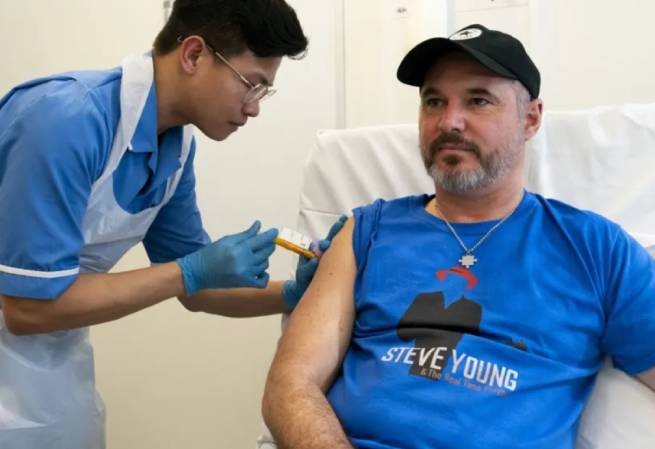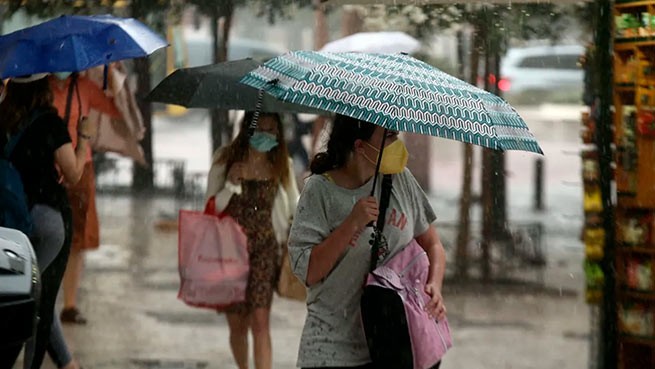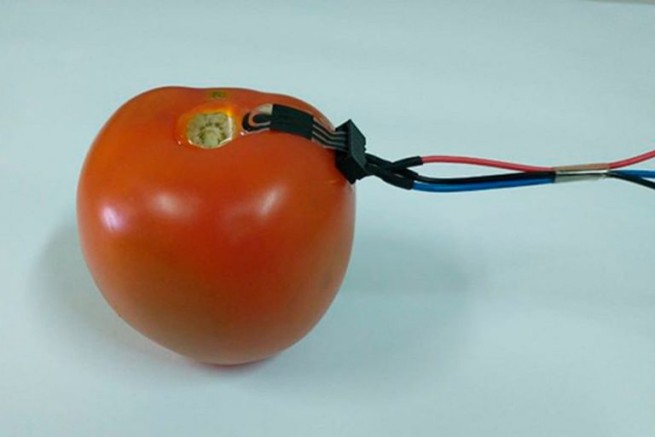Eco-friendly, biodegradable “pocket” sensors, invented in Brazil, measure pesticide levels in minutes by direct contact with the surface of fruits or vegetables.
Researchers from the University of Sao Paulo and the Federal University of Viçosa in Brazil have developed a device that determines how “contaminated” a fruit or vegetable is with pesticides.
The sensor is made of cellulose acetate obtained from wood pulp (sawdust). The device, presented in a publication in the scientific journal Biomaterials Advances, promises to improve food safety by detecting substances in fruits and vegetables that can be highly hazardous to public health and the environment.
50% of pesticides end up in soil, water and food
Pesticides are widely used on crops around the world and are usually applied by spraying, but only 50% of the substances reach their target. The remaining 50% ends up in the soil, ground and surface water, drinking water, wastewater and even food. Controlling pesticide levels in water, soil and food is vital to prevent human exposure to toxic substances that may be absorbed through the skin, respiratory tract or digestive system.
Disadvantages of existing instruments and advantages of the new sensor
Analytical tools commonly used to test for the presence of pesticides in fruits and vegetables include chromatographic methods, which are effective but have several disadvantages, such as the need for pre-treatment of samples, the use of expensive stationary equipment and specialized laboratory personnel, and the long time required for analysis.
“An alternative electrochemical sensor combines low cost, rapid detection of toxic chemicals, portability, small size, ease of use and large-scale production. Our invention has all these properties. The analysis is carried out directly on the surface of fruits, vegetables or leaves,” says Paulo Augusto Raimundo-Pereira, lead author of the study and researcher at the Carlos Institute of Physics of the University of São Paulo.
Using a new wooden sensor, researchers conducted laboratory experiments, in which lettuce and tomatoes were sprayed with a solution containing the fungicide carbendazim and the herbicide paraquat (note that the use of paraquat was banned in the European Union in 2003 due to its harmful effects, according to WHO, but is still used in Brazil). And having placed the sensor, the accuracy of detecting the pesticide in the object under study was compared.
Pesticides are not washed off with water
For the study, researchers looked at whether washing vegetables or soaking them in a liter of water for two hours were effective methods for removing pesticide residue.
The data found that these methods removed only 40% of carbendazim and 60% of paraquat from lettuce and 64% of both from tomatoes. “Washing and soaking vegetables in water was clearly not sufficient to remove pesticide residues. At least 10% remains in the leaves or peel,” said Dr. Raimundo-Pereira.
According to the researcher, the new technology could be useful for food control authorities around the world, as well as for organic producers, who will be able to confirm that their products are, in fact, free of pesticides.







More Stories
UK: human trial of melanoma vaccine started
ProNews: The government is methodically destroying the healthcare system in order to transfer it to the private sector
May Day strikes throughout Greece, operating hours of public transport are limited to the maximum (additions are being added)